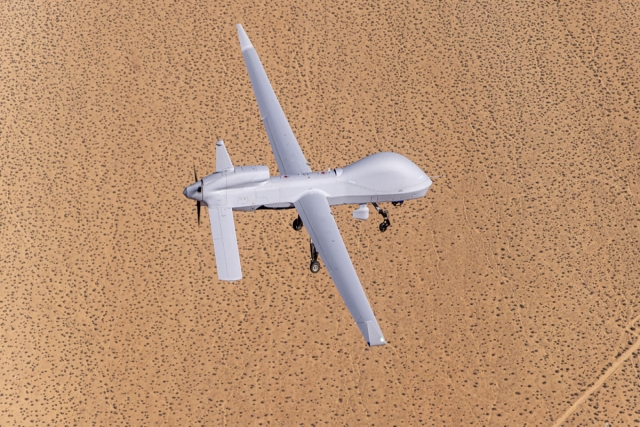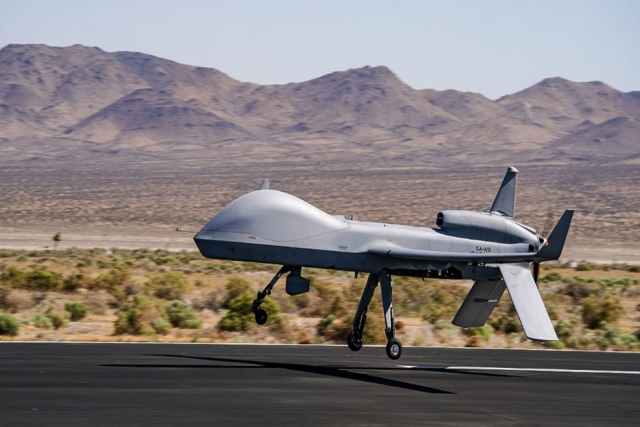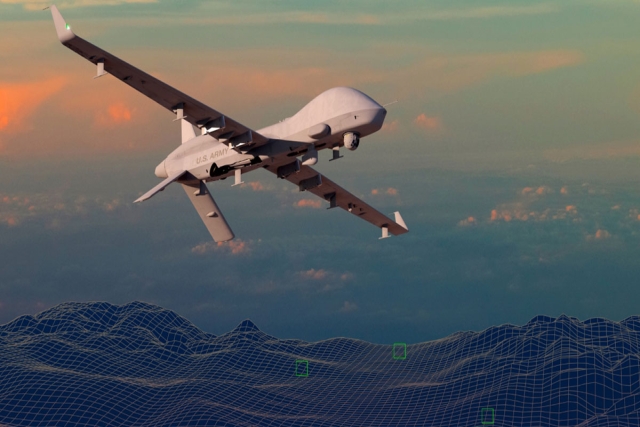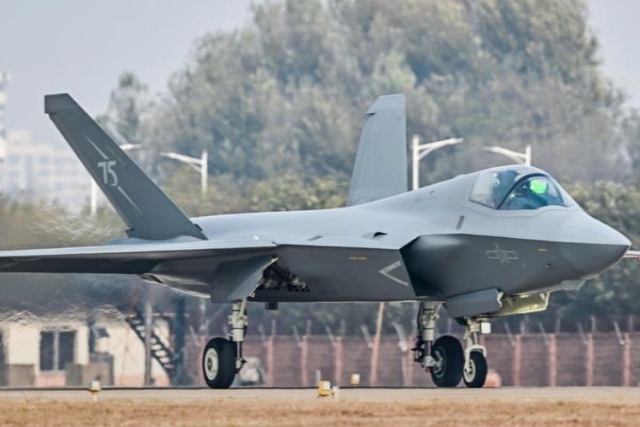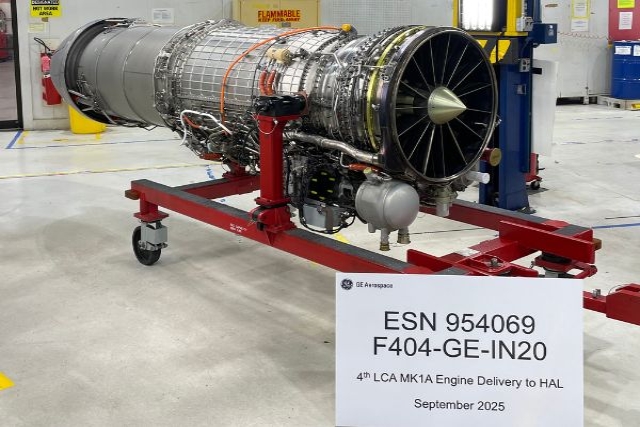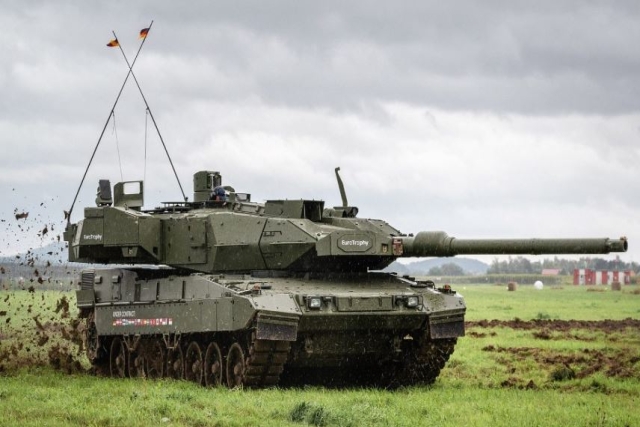GA-ASI to Double EagleEye Radar Range with AESA Antenna Upgrade
AESA antenna with EagleEye radar could be an option for the new Gray Eagle 25M drone
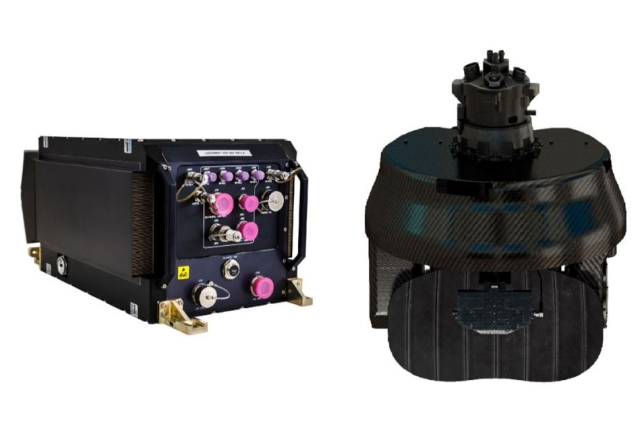
General Atomics Aeronautical Systems, Inc. (GA-ASI) will integrate an Active Electronically Scanned Array (AESA) antenna and associated software to the EagleEye multi-mode radar.
This upgrade is designed to double the radar’s range and enhance operational modes.
AESA will be a “drop-in” hardware upgrade to the existing EagleEye radar and could be an option for the new Gray Eagle 25M (GE 25M) aircraft assembly when ready.
The increased range and optimized multi-mode performance of the radar are tailored to provide deep sensing capability in Multi-Domain Operations (MDO). That will allow the aircraft to operate well outside Weapons Effects Zone of most threat systems adding a layer of survivability supporting the Stand-Off survivability with Stand-In effects of long-range sensors.
AESA antennas replace the mechanically steered dish antennas of earlier-generation radars with a solid-state, all-electronic emitter. In addition to enhancing the radar’s performance, by replacing the motor and other components that physically move the radar dish, AESA improves repairability and reliability.
As part of the EagleEye development, GA-ASI will improve target detection range using Artificial Intelligence/Machine Learning (AI/ML). GA-ASI expects to have a working lab prototype of the new AESA component by the end of this year, with plans to conduct flight tests in 2025 and operational demonstrations on GE 25M after that.
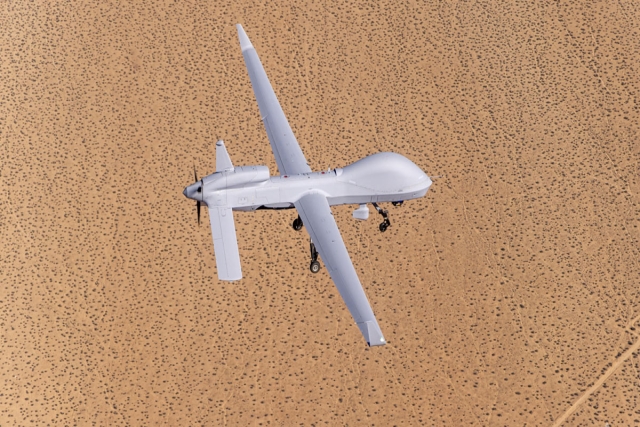
Using Synthetic Aperture Radar (SAR), Eagle Eye enables operators to look in detail through clouds, smoke, dust, haze, or other conditions that might obscure a purely visual sensor. And for the first time on the Gray Eagle platform, EagleEye delivers radar-based Full Motion Video (FMV) called “Video SAR,” which enables live visual tracking of moving targets via the radar system.
The EagleEye radar performs Moving Target Indication (MTI), detects changes, builds strip maps, and yields other precise insights to analysts, commanders, and operators.
With its Maritime Wide Area Search (MWAS) mode, EagleEye also provides a dedicated maritime MTI mode for tracking and targeting vessels and further supports the MDO mission set of the U.S. Army, particularly in support of the U.S. Indo-Pacific Command (INDOPACOM) mission, but also in Europe, Africa and the Middle East where there is an increased need for maritime reconnaissance, surveillance and target acquisition.
